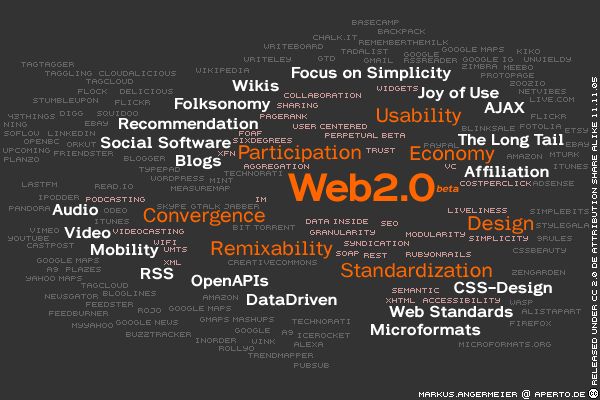The history of the internet, along with that of the microwave, hang-gliders and smoke detectors, can be traced back to the cold war between the US and the USSR. When the USSR launched the Sputnik program to demonstrate that artificial satellites could be launched into orbit around the Earth, the US realised that the USSR had developed the capacity to rapidly exploit military technology. So in response to this, in 1958 they created the Defense Advanced Research Projects Agency (DARPA) to try and wrestle back the technological lead.
DARPA started to investigate the idea of linking computers together to share information, and so they started to network radar systems across the US. JCR Licklider had the vision that the universal networking of computers could potentially be a unifying human revolution, however it would be many years before this vision came to fruition.
Robert Taylor, the head of the information processing office at DARPA, intended to realise Licklider's dream, and with Larry Roberts from the Massachusetts Institute of Technology, he started up a plan to build such a network. This network, called the ARPANET, had its first link established in 1969 between the University of California, Los Angeles and the Stanford Research Institute, and following links to the University of Utah and the University of California, Santa Barbara were added during the same year. By 1981, the ARPANET was growing rapidly, with the 213 hosts, and would become the technical core of the future Internet. By this stage, all US National Laboratories were also connected for scientific research purposes.
In 1983, the US National Science Foundation constructed a university network backbone that was opened to commercial interests in 1995. This networked merged into other pre-existing networks such as Telnet, and somewhere around this time, the word “Internet” came to describe the global network that we know today.
During the 1990s, the internet truly gained public acceptance. In 1991, the research organisation CERN made the "World Wide Web" project public, and in 1994 there was growing public interest in the Internet, which was previously seen as largely technical or academic. The growth of the internet is often attributed to the lack of a central owner, which means that the network can grow without bounds and without any one company exerting too much control.
 But what of the future of the internet? Many people in recent times have been talking of "Web 2.0", which refers to the second generation of services available on the World Wide Web. These allow people to collaborate and share information more easily online. So instead of having a static website at your finger tips, the web will be more dynamic and interactive, with new concepts such as blogs, wikis, podcasts and RSS feeds abounding. Check out the CRI website for CRI blogs, and even Mr Science has a podcast at feeds.feedburner.com/MrSciencePodcast.
But what of the future of the internet? Many people in recent times have been talking of "Web 2.0", which refers to the second generation of services available on the World Wide Web. These allow people to collaborate and share information more easily online. So instead of having a static website at your finger tips, the web will be more dynamic and interactive, with new concepts such as blogs, wikis, podcasts and RSS feeds abounding. Check out the CRI website for CRI blogs, and even Mr Science has a podcast at feeds.feedburner.com/MrSciencePodcast.Whilst not everyone aggress on what Web 2.0 means, the basic idea is that users generate content, rather than simply consume it from an unchanging website, and that open programming interfaces let users add to a web service and easily get data from it. Users tag pages they like, so that instead of a company deciding which news articles you should read, the most popular and highly ranked sites from that day are displayed. You could also add to the content by modifying it yourself – the idea behind wiki pages – or create your own blog. Advertising is more targeted towards the user by reflecting the content of the page you are currently visiting, and the pages you have visited in the past, as well as what you have previously searched.
So get our there, create a blog, post on forums, listen to podcasts, and contribute to the not-so-brave, but slightly cool, world of Web 2.0.
Listen to this show here












No comments:
Post a Comment